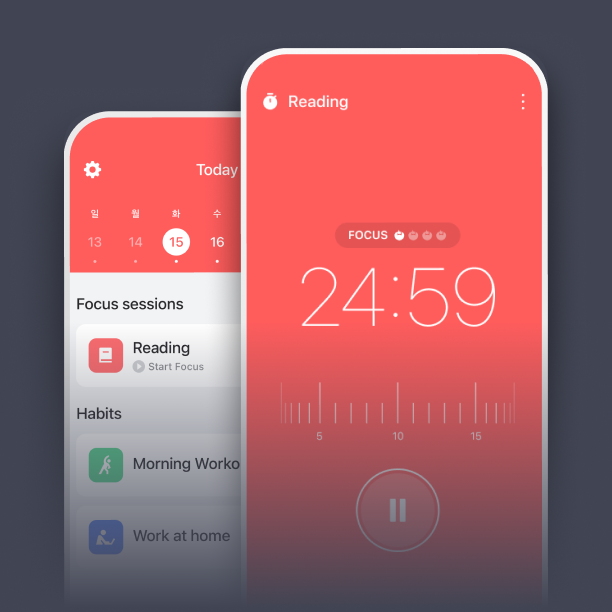What is screen time logging?

What is screen time logging?
In our digital age, screen time logging has emerged as a vital practice for managing our time effectively. As we find ourselves increasingly glued to our devices, understanding how much time we spend on screens can offer profound insights into our habits. Screen time logging allows us to monitor our usage, improve productivity, and enhance our overall well-being. This approach empowers us to make conscious choices about our digital lifestyles, ensuring that we use technology in a healthy and balanced way.
Understanding Screen Time Logging
Screen time logging refers to the process of tracking and recording the amount of time spent on various digital devices. This includes smartphones, tablets, computers, and even televisions. But how does it work, and what are its key components?
Definition of Screen Time Logging
At its core, screen time logging is about awareness. It involves documenting how much time you spend on each app or activity throughout the day. By keeping a log, you can identify patterns in your screen usage and understand how it affects your daily life. With this information, you can make informed decisions on how to adjust your habits for better productivity and well-being.
How Screen Time Logging Works
Screen time logging can be accomplished through various tools and apps designed to track usage. Most smartphones come equipped with built-in features like Apple’s Screen Time or Android’s Digital Wellbeing. These tools provide detailed reports on app usage, screen time averages, and even allow you to set limits on certain activities. For example, you can see how many hours you spend on social media versus work-related tasks.
There are also specialized apps to enhance your tracking experience, such as the Screen Time Tracker, which aids in creating a more intentional relationship with your device.
Benefits of Screen Time Logging
Engaging in screen time logging offers a wealth of benefits, especially for those looking to manage their time more effectively.
Improving Productivity
One of the most significant advantages of logging your screen time is the potential to enhance productivity. By recognizing how much time you allocate to various tasks, you can identify distractions and focus areas. For instance, if you discover that you’re spending an excessive amount of time on social media, you can set specific limits or schedule dedicated breaks to refocus on work.
Enhancing Work-Life Balance
Finding balance in the digital landscape can be challenging. Screen time logging helps you maintain that balance by highlighting when your screen usage is interfering with personal time. By analyzing your data, you can adjust your habits to ensure that you are not sacrificing family time, hobbies, or self-care for screen-based activities.
Identifying Digital Habits
Have you ever thought about how often you pick up your phone? Logging screen time can reveal habitual behaviors that you may not even realize you have. These insights can encourage positive changes in your digital habits, leading to healthier interactions with technology. For example, being aware of how many times you check your email can help you establish designated times for emails instead of constant checking throughout the day.
Implementing Screen Time Logging
Starting your screen time logging journey is straightforward. Here’s how to get going.
Choosing the Right Tools
Selecting the right tools is crucial for effective screen time logging. Popular apps include RescueTime, which tracks your activities in the background, and Moment, which helps you monitor your device usage. For those with children, parental control apps like Screen Time can help manage and supervise their digital usage.
Setting Goals and Boundaries
After choosing your tools, it’s time to set meaningful goals. Think of specific limits you’d like to impose on certain activities. For instance, if you want to reduce gaming hours, you might set a goal of no more than one hour each day. By establishing these boundaries, you create a framework for healthier screen time habits.
Regular Review and Adjustment
Tracking screen time is not a one-time activity. Regularly reviewing your logged data is essential to see what’s working and what’s not. Are you sticking to your goals? If you find yourself exceeding limits, it may be time to adjust your approach or set more realistic boundaries.
Challenges and Considerations
While screen time logging offers numerous benefits, it does come with challenges.
Overcoming Resistance to Change
Many people may feel resistant to tracking their screen time. This could stem from a fear of discovering how much time they actually spend on screens. To overcome this, remind yourself that awareness is the first step to positive change. Embrace the process as an opportunity for growth rather than a source of shame.
Maintaining Consistency
Staying consistent with screen time logging can be tricky. One way to ensure you stick with it is to integrate the logging process into your daily routine. For example, you could review your screen time data at the end of each day or week. This regular check-in can reinforce your commitment to healthier digital habits.
Conclusion
Screen time logging is a powerful tool in today’s fast-paced digital world. It encourages awareness, fosters productivity, and promotes a healthier work-life balance. By implementing simple logging techniques, choosing the right tools, and setting achievable goals, you can take charge of your digital habits. As you begin your journey into screen time logging, remember that every small step counts toward a more intentional and fulfilling relationship with technology. So, why not start today?
